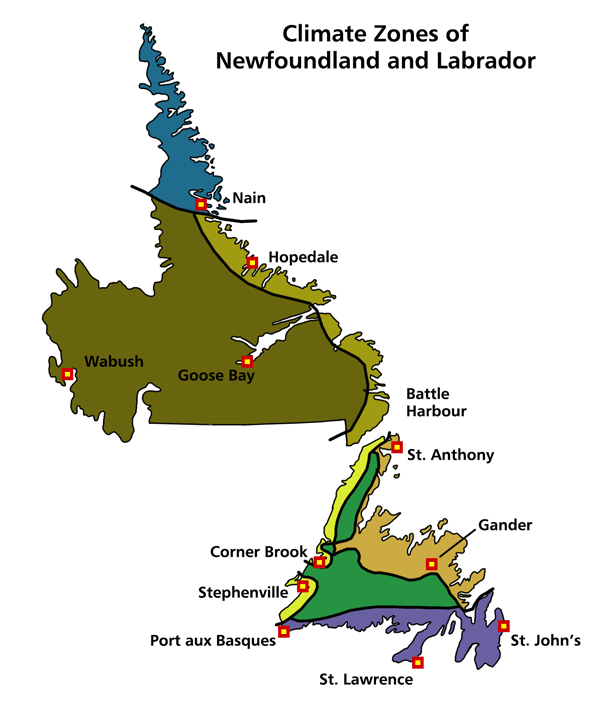Climate Characteristics
The climatic patterns of Newfoundland and Labrador are discussed here season by season, and are illustrated by maps and graphs. The map of Climate Zones provides a spatial framework for this study of the annual cycle.

![]()
Tundra Climate - Summers too short and cool to support full tree growth. Precipitation decreases toward north. Mountains and fjords create locally variable weather conditions, especially in summer.
![]()
Interior Labrador - Most continental of the province's climate regimes. Lengthy, very cold winters with deep snow cover but relatively more settled weather patterns. Upper Lake Melville area has relatively shorter winters and warmer, sunnier summers.
![]()
Coastal Labrador - Exposed to stormy or unsettled weather from Labrador Sea. Heaviest precipitation normally south of Groswater Bay. Occasional extremes of temperature during offshore wind directions in summer and winter.
![]()
West Coast - Marine influence from Gulf of St. Lawrence normally reduces temperature extremes but causes increased precipitation, especially during fall and early winter, when snowfalls are most frequent. Locally severe wind speeds descend from Long Range Mountains during favourable winter weather patterns.
![]()
Western Mountains and Central Uplands - Increasing elevation normally results in lower temperatures, greater cloudiness and precipitation and stronger winds. Heavy winter snow accumulations, especially toward west.
![]()
Northeast Coast and Central Lowlands - Driest area on island. Occasional very low winter temperatures in valleys. Cool, late spring near the coast, where sea ice often persists into May. Generally warm and sunny summers.
![]()
South Coast and Avalon - Relatively mild winters with considerable variation in snow cover. Heavy rainfalls from October through December. Summers cooled by low clouds and fogs near coasts, considerably brighter and warmer inland.




